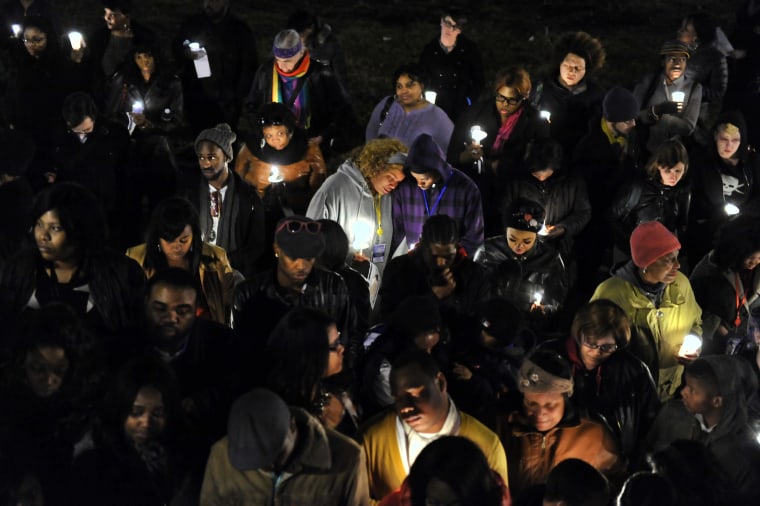Last year, 12 transgender women of color were murdered. While their tragic deaths have been documented on LGBT blogs, for the most part, their killings ceased to garner mainstream attention. So far this year, an additional three names can be added to what is becoming a considerable list of transgender women of color being killed, for simply showing up and being who they are. Many have asked, where is the outrage? Where is the national campaign to end violence against transgender people?
Those questions however aren’t the right ones. The real question is whose lives do we value and whose lives are invisible?
When Leelah Alcorn, a white transgender teen took her own life, she left a clear message on her tumblr suicide note:
The only way I will rest in peace is if one-day transgender people aren’t treated the way I was, they’re treated like humans, with valid feelings and human rights. Gender needs to be taught about in schools, the earlier the better. My death needs to mean something. My death needs to be counted in the number of transgender people who commit suicide this year…Fix society. Please.
Leelah’s death struck a nerve and a hashtag which cast a spotlight on the plight of transgender teens, and her plea to “fix society” continues to resonate some months later. Her heartbreaking suicide garnered the attention of millions, and prompted an impassioned dedication by the stars of Amazon’s show Transparent during their Golden Globe acceptance speech. Her death re-ignited a conversation on teen LGBT suicide, depression and the need for acceptance. Still I can’t help but wonder what the response would have been if Leelah was an LGBT teen of color—if she were among the 80% of transgender youth of color that are harassed on a daily basis, or a third of which have experienced physical violence?
According to the most recent report from the National Coalition of Anti-Violence Programs (NCVAP) a staggering 90 percent of LGBTQ homicide victims in 2013 were LGBTQ people of color. 67 percent of those homicide victims were transgender women of color. With these numbers presented in black and white one would think that there would be a national outcry for justice. Where are the national calls for empathy and justice for the lives of Jessie Hernandez, an unarmed 16-year-old queer Latina girl who was recently killed by police in Denver, or Ty Underwood, Tiffany Edwards, Cemia Dove, Betty Skinner, or the numerous other transgender women of color who have been murdered?
Time magazine asked if we reached the transgender tipping point last year; but I guess it depends on who you ask.
Actress and transgender advocate Laverne Cox is having the best year ever, starring in an award winning show while single-handedly holding down the cause for black transgender women. Should one person be left to carry the banner for an entire community? If it wasn’t for Laverne and author/MSNBC Shift host Janet Mock, the lived experiences of black transgender women would still be in the shadows. Thankfully, they are using their celebrity for a good cause—but what if they didn’t?
Society places a lot of value not only on whiteness but also on celebrity—and when those two entities are combined the results are breathtaking.
Olympian and former Kardashian/Jenner patriarch Bruce Jenner is receiving tremendous amounts of media attention for the anticipated announcement on his transition. While Bruce has yet to comment, many headlines have hailed his courage and bravery for coming out. I too commend Bruce for living his truth and possibly taking us on the journey, but how brave is it to be a wealthy, retired, white celebrity?
Bruce doesn’t stand to lose anything by coming out. He won’t lose his job, home, children etc. He isn’t risking his life by taking street hormones because he doesn’t have the resources or healthcare to be properly treated. He doesn’t have to work the streets further risking his life merely to survive. So, why then do we delight in his courage yet trivialize at best, or ignore at worst, the lived reality of so many vulnerable transgender women of color who fall to the bottom of most metrics, and are more likely to live in poverty and become victims of violence.
The murders of transgender women of color may be happening under the cloak of darkness but the continued disrespect of their lives is happening in broad daylight, under our watch. While millions will no doubt be glued to the television for Jenner’s new reality TV offering—I hope that the issues facing transgender people and transgender women of color specifically shift from the sensationalized tendencies of television, into our consciousness; because their lives deserve attention; their lives deserve celebrations, their lives did and do matter.
